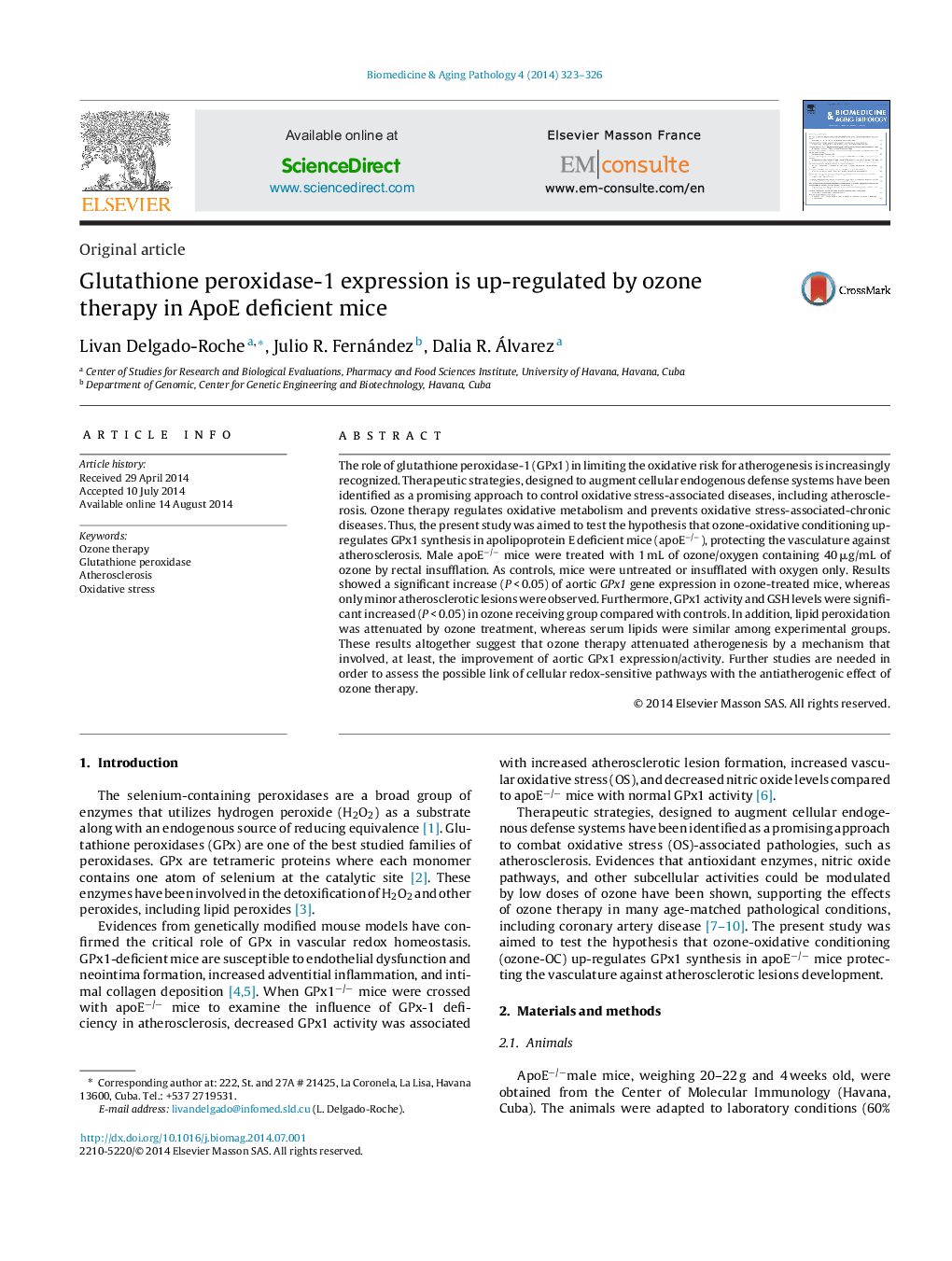| Article ID | Journal | Published Year | Pages | File Type |
|---|---|---|---|---|
| 2576177 | Biomedicine & Aging Pathology | 2014 | 4 Pages |
The role of glutathione peroxidase-1 (GPx1) in limiting the oxidative risk for atherogenesis is increasingly recognized. Therapeutic strategies, designed to augment cellular endogenous defense systems have been identified as a promising approach to control oxidative stress-associated diseases, including atherosclerosis. Ozone therapy regulates oxidative metabolism and prevents oxidative stress-associated-chronic diseases. Thus, the present study was aimed to test the hypothesis that ozone-oxidative conditioning up-regulates GPx1 synthesis in apolipoprotein E deficient mice (apoE−/−), protecting the vasculature against atherosclerosis. Male apoE−/− mice were treated with 1 mL of ozone/oxygen containing 40 μg/mL of ozone by rectal insufflation. As controls, mice were untreated or insufflated with oxygen only. Results showed a significant increase (P < 0.05) of aortic GPx1 gene expression in ozone-treated mice, whereas only minor atherosclerotic lesions were observed. Furthermore, GPx1 activity and GSH levels were significant increased (P < 0.05) in ozone receiving group compared with controls. In addition, lipid peroxidation was attenuated by ozone treatment, whereas serum lipids were similar among experimental groups. These results altogether suggest that ozone therapy attenuated atherogenesis by a mechanism that involved, at least, the improvement of aortic GPx1 expression/activity. Further studies are needed in order to assess the possible link of cellular redox-sensitive pathways with the antiatherogenic effect of ozone therapy.
